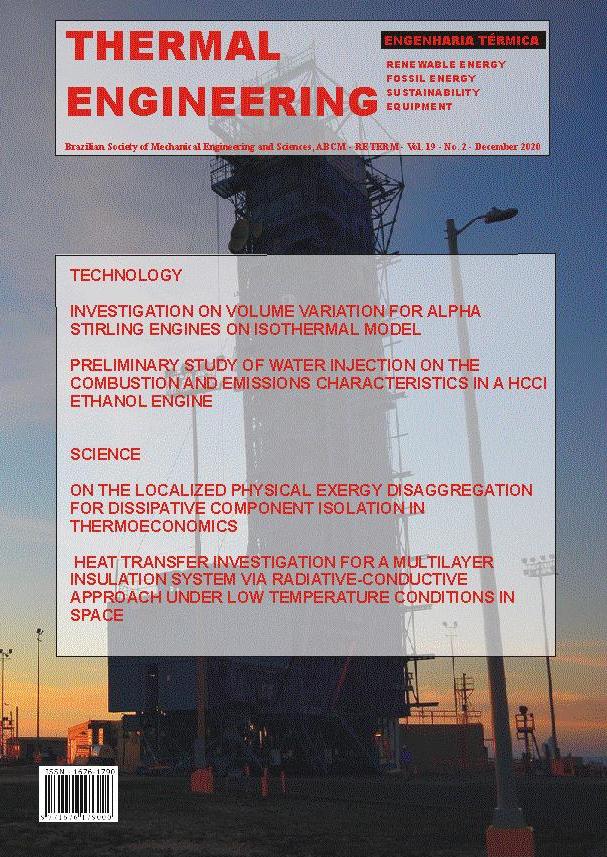SMALL ENGINE-GENERATOR SET OPERATING ON DUAL-FUEL MODE WITH ETHANOL – CASTOR OIL BLENDS
DOI:
https://doi.org/10.5380/reterm.v19i2.78609Keywords:
internal combustion engine, ethanol, castor oil, dual-fuel operationAbstract
The increase in greenhouse gas emissions and our dependence on fossil fuels have motivated researchers to seek the use of renewable fuels in internal combustion engines, which can be produced locally and have clean combustion. The blending method in diesel engines has been recognized as an effective alternative to partially or totally replace the use of diesel fuel. In this regard, this paper studied the operation of a small engine-generator set in mono-fuel mode (diesel fuel - DO) and in dual-fuel mode using hydrous ethanol (HET) and castor oil (OM) blends, indicating a total replacement of diesel fuel. Efficiency, power, specific fuel consumption and gaseous emissions were assessed in a single cylinder diesel cycle engine. The percentages in volume of the HET-OM samples were: 75% - 25%, 70% - 30%, 60% - 40%, and 50% - 50%. The exhaust gas temperature decreased with the mixtures. Carbon monoxide emission decreased 57%, carbon dioxide decreased 9.8%, and nitrogen oxides reduced 19%. It was also observed that the percentage of smoke opacity tends to decrease close to zero with addition of ethanol. Hydrocarbon emissions increased with rising of the OM concentration and the same for the specific fuel consumptions, which was 25.4% higher than diesel fuel. The best fuel conversion efficiency was achieved with the blend HET75-OM25, being 9% higher compared to diesel fuel operation. Power on diesel fuel operation showed a better result keeping stable, with the increase of the compression ratio and the delay of the start of injection. In general, the results confirmed that the performance is comparable to that of diesel fuel, indicating that renewable fuels appear as an alternative for the reduction of the environmental impacts and the reduction of fossil fuels consumption.
Downloads
Published
How to Cite
Issue
Section
License
Direitos Autorais para artigos publicados nesta revista são do autor, com direitos de primeira publicação para a revista. Em virtude da aparecerem nesta revista de acesso público, os artigos são de uso gratuito, com atribuições próprias, em aplicações educacionais e não-comerciais.



